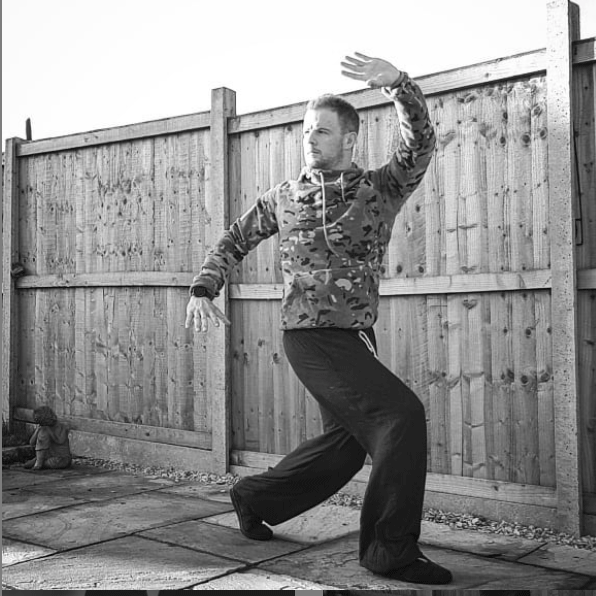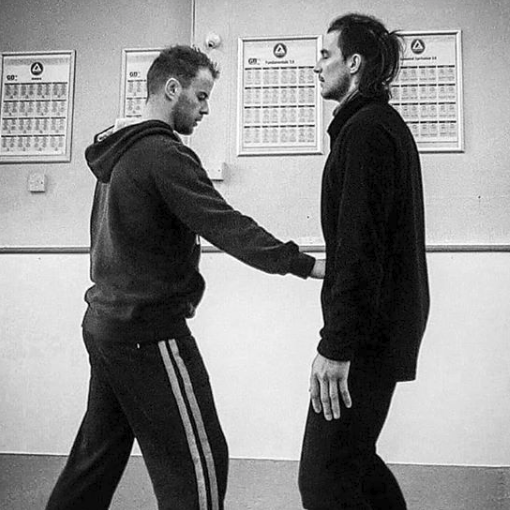An integral part of body method training, regardless of origin or source is the process of ‘embedding’. Even if we look at modern strength training methods, there is a period of training where embedding the correct technique occurs prior to the increase in load. But this idea is never truer than when looking at attribute training like that found in MartialBody. Without this idea at play in every training session, it would become easy to be disheartened or worse still, not actually develop anything useful.
Martial arts training can be divided into 3 areas of importance when considering the performance of the individual
1) Skill & Technique 2) Capability of the body 3) Capability of the mind and intent.
Of course, there are many other aspects to the Martial Arts, from community to tradition, however, these three areas of development encompass most of what we would naturally consider personal progress.
Skill & technique : - Techniques are the styles approach to solving specific problems, it is the catalogue of blocks, strikes, grips, holds, throws and pins that the exponent must understand and learn in order to employ the style correctly. ‘Skill’ is the ability to apply these techniques as and when appropriate.
Capability of the body : - This is the level at which our body can perform the skills, techniques and tactics required of it. For instance, if the moment a fighter finds themselves in calls for a high round kick to the head, but you cannot perform one due to a lack of flexibility, this is a deficiency of body, not technique. So, the capability of the body to perform is as fundamental as what you are trying to perform.
Capability of the mind : - This is the level at which we can act appropriate to the situation we find ourselves in. How we can adapt to the ever-changing conditions of the moment, and how focused we can become. This is perhaps the hardest part of the process to achieve. For instance, creating ‘the fight’ in a combat sports athlete can be one of the most challenging aspects of a coach’s job.
Of these three concepts, which invariably overlap, number 1 and 2 require a deep focus on the concept of ‘embedding’ while number 3 may also be as much about letting go or removing as anything adding or embedding.
Just Practice!
 This is a phrase that can be heard in martial arts gyms around the world, and for the most part it is a very sound piece of advice. For example, how many sessions have you been to where there is more talking than training? In these situations, the phrase ‘just practice’ is well founded!
This is a phrase that can be heard in martial arts gyms around the world, and for the most part it is a very sound piece of advice. For example, how many sessions have you been to where there is more talking than training? In these situations, the phrase ‘just practice’ is well founded!
However, is the idea of ‘just practice’ enough? With everything we now know about the way we learn and pick up new skills, the way we create new patterns in our mind and body, and the way we embed those patterns? Probably not. There is more to embedding and embodying a method than simply practicing it ad nauseum.
But how to go about the task of working constructively? Some people enjoy ‘Hacking the system’, finding the fastest or more often ‘easiest’ way to do something. Others are ‘old school’ grinders who will just show up every day and repeat the training methods. However, both approaches have pros and cons so we should be looking for a happy middle ground where we work extremely hard … but also work in an extremely smart way.
When it comes to techniques and skill training there are many ways that can be used to embed, and every martial art may approach things differently. Some will ‘drill’ the technique repeatedly until it becomes ‘muscle memory’ while others may set up free play martial ‘games’ in order to contextualise the technique in various scenarios.
What isn’t often focused on is the embedding of attributes or qualities in the body. Of course, this relates very closely to MartialBody training which is fully focused this goal.
Understand the goal, then plan to embed.
Firstly, in order to understand embedding attributes or qualities in the body we must consider what it means to have those attributes. So, when looking at the development of our bodies capabilities, we need to be cognisant of the expected results from a given training method. If we lift weights, have a good diet and do it regularly, we can expect to build some muscles. But what can we expect to mark our progress in something like ‘stability’? Without understanding what we can expect from that process it can be very difficult to understand the process of embedding and why we are continuing to train a given method.
When we understand the outcomes or goals of a given training method, we can begin to work towards them. This is where the correct planning for the process and the production of a routine that will allow us to work hard with a focused attention on what we are doing is useful. This, of course, is nothing new and yet this is often the first-place people fall.
Even those who understand the goal, and plan to achieve it, can often be found wandering off into ‘more fun’ things to do than the, sometimes monotonous, methods that will embed a quality there are looking for. This wandering of focus invariably leads to poor gains and will stall progress. It can take a special sort of person to just get their head down and do what must be done! But this is where the ‘hacker’ and ‘old school’ mentalities can merge!
Training hard and smart should mean just that, you maximise the efficiency of your training time but training as hard as possible with maximum focus. Hard training can mean standing still for 20 minutes, its not about the level of sweat, but you should be fully focused on what you are doing and why. Not simply going through the motions.
Planning the times in which you can train, making them non-negotiable, and training with depth and focus in the right methods when you do, is a massive first step towards embedding qualities.
Understanding the timescales for change.
Knowledge is power and when it comes to taking responsibility for your own training it is better to be informed! The more we understand about the expected results in an expected timeframe, the easier it becomes to plan. For instance, if I am working on connection training, and understand that much of that work is related to connective tissues, I can investigate how long it takes for those tissues to adapt. A simple google search will yield that we can expect a 3 – 6 month timeframe for adaption to connective tissues to occur. As such, we should be aiming for that timeframe in our connection training alone!
Other sections of attribute training may well work to very different timeframes, the awareness training of the FluidBody, the movement work of the SpiralBody or the sinking work of the HeavyBody, will all take a varied amount of time to achieve. Some of these methods cannot be defined via a simple google search of course and here we must look to the next idea related to embedding, Getting feedback.
Work on embedding
Here is where the meat of the work must be presented. You know what you are doing and why … now we train … and train hard! In order to embed something in our bodies we must stick too it, not deviate and stay true to the goals until we reach them.
There is a saying in the Chinese Martial Arts that practitioners must ‘Taste the Bitter’. This is a good phrase as it points towards the hardship of embedding. Often, the process is not enjoyable, it is not some blissed out meditative state. Normally, it is a hard-focused slog towards a given goal. If you can truly accept that, your work to embed will last.
Getting feedback to mark progress.
There is no greater marker of progression than someone you already train with regularly noticing a difference in you. When this occurs, it means that you are really beginning to embody something you are working on.
 As such it is very important to pay attention to your training partners and how they can interact with you. Are they struggling to do things that only months ago them could achieve with consistency? Do they make comments on your ‘strength’, speed or other such common attribute? These are all fantastic markers that something is changing for the better.
As such it is very important to pay attention to your training partners and how they can interact with you. Are they struggling to do things that only months ago them could achieve with consistency? Do they make comments on your ‘strength’, speed or other such common attribute? These are all fantastic markers that something is changing for the better.
Further, you can ask your training partners if they have noticed anything different in you during your training with them. A straight question can sometimes also yield results! But should the answer come back in the negative, it is vital not to become disheartened! You may simply not have given the attribute enough time to take hold.
Getting feedback from your body
The next marker of progression is simply in how you feel. For instance, if you have identified that you are unstable in movement, and train towards the goal of increasing your StableBody, do you notice a difference in how you move of use your body? If a change is present, then you have likely developed some stableBody skill and it wouldn’t take a rocket scientist to figure out that your training was pointed in the right direction!
I like to use the old concept of assessing how you ‘Look, feel and perform’ as a good marker for improvement. Has the shape of your body changed at all? How do you feel after a period of training compared to when you started? How do you perform in your given martial art? These are questions that can also point you towards the progression.
Embedding
So, you have found that you are working towards a specific goal, are getting feedback from regular training partners and yourself, but when do we know we have embedded something? There are 3 primary markers that something we are trying to embed has been.
- The attribute remains when not ‘Trying’ to demonstrate it.
Here someone bumping into a well-developed heavy body will feel they have bumped into a bolder, etc.
- The attribute can be expressed in a myriad of situations and scenarios without thought.
Every touch, every step, every move is filled with the given attribute.
- We lose the feeling that we are doing anything different
The return to naturalness is a sure-fire sign that something is embedded. There is a lot of talk of ‘natural’ movement, but this is a trained ‘naturalness’ that is full of the qualities created.
Conclusion
It is often the case, especially with MartialBody training that we are unaware of improvement in the attributes. Things like ‘heaviness’ or ‘stability’ are not easy things for us to measure. But hopefully the tips in this article will move you closer to embedding these highly useful conditions.